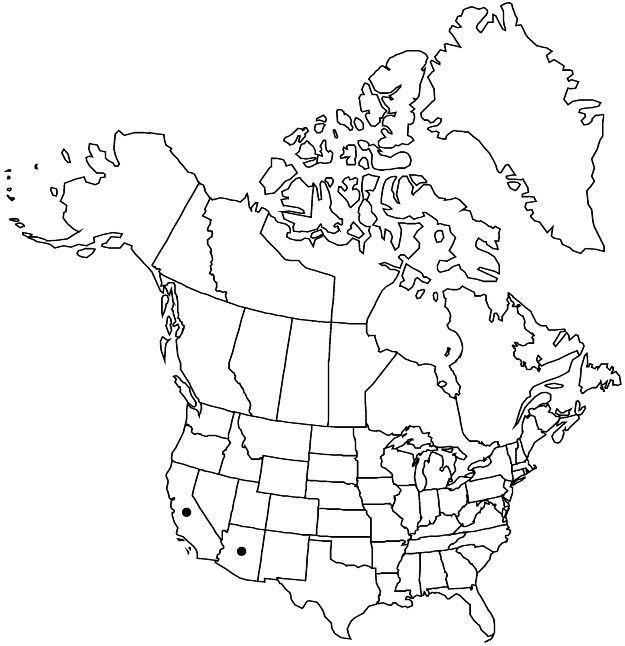Oxalis californica
Notizbl. Bot. Gart. Berlin-Dahlem 7: 300. 1919.
Herbs perennial, caulescent, rhizomes and stolons absent, bulbs absent. Aerial stems usually 2–8 from base, erect to ascending, 10–40 cm, becoming woody proximally, glabrous or very sparsely short-puberulent, hairs curved-ascending, nonseptate. Leaves basal and cauline; stipules oblong, margins narrowly flanged, apical auricles absent; petiole 3–8 cm, hairs nonseptate; leaflets 3, gray-green, obcordate, 8–15 mm, lobed 1/5–1/3 length, surfaces sparsely strigose, oxalate deposits absent. Inflorescences umbelliform cymes, 1(–3)-flowered; peduncles 2–9 cm. Flowers distylous; sepal apices without tubercles, surfaces glabrous; petals yellow, with red lines proximally, 7–11(–13) mm. Capsules angular-cylindric, abruptly tapering to apex, 10–15 mm, strigillose, hairs very short, nonseptate.
Phenology: Flowering (Dec–)Feb–Apr(–Jun).
Habitat: Slopes and flats, brushy ridges, roadside banks, canyon bottoms, rock outcrops, grasslands, oak chaparral, coastal sage scrub.
Elevation: (0–)30–800 m.
Distribution

Ariz., Calif., Mexico (Baja California).
Discussion
Oxalis californica is recognized by its caulescent habit, stems with reduced vestiture (glabrous or very sparsely short-puberulent), one (to three) flowers on long peduncles and pedicels, the yellow corollas often drying with a blue or purplish tinge, and relatively wide, glabrous, and usually purplish or pinkish tinged sepals.
Selected References
None.